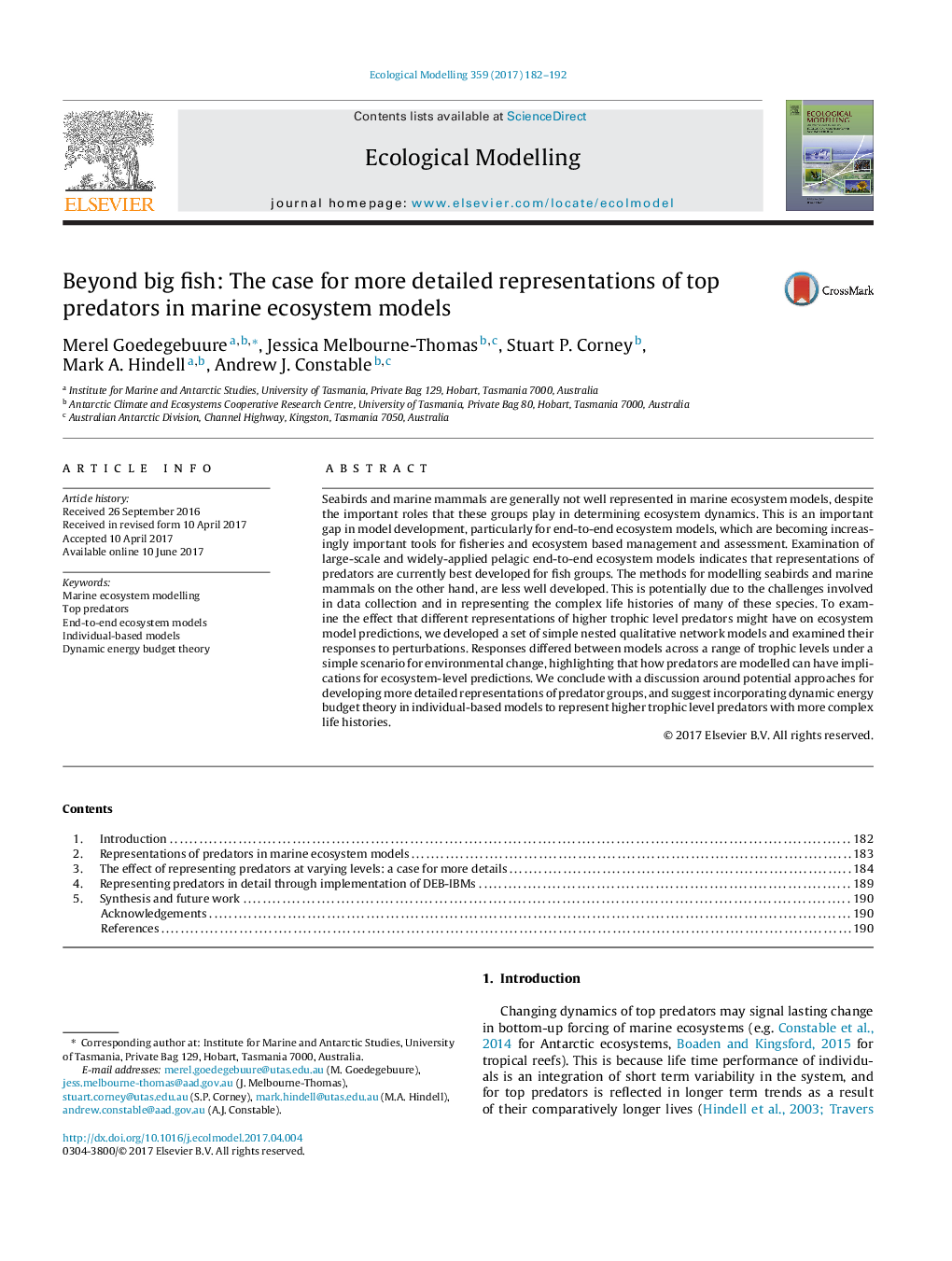| Article ID | Journal | Published Year | Pages | File Type |
|---|---|---|---|---|
| 5742130 | Ecological Modelling | 2017 | 11 Pages |
â¢Gap in detailed representation of top predators in ecosystem models.â¢Model outcome can be influenced by the detail used for representation of predators.â¢Detailed top predator representations can be included in models through DEB-IBMs.
Seabirds and marine mammals are generally not well represented in marine ecosystem models, despite the important roles that these groups play in determining ecosystem dynamics. This is an important gap in model development, particularly for end-to-end ecosystem models, which are becoming increasingly important tools for fisheries and ecosystem based management and assessment. Examination of large-scale and widely-applied pelagic end-to-end ecosystem models indicates that representations of predators are currently best developed for fish groups. The methods for modelling seabirds and marine mammals on the other hand, are less well developed. This is potentially due to the challenges involved in data collection and in representing the complex life histories of many of these species. To examine the effect that different representations of higher trophic level predators might have on ecosystem model predictions, we developed a set of simple nested qualitative network models and examined their responses to perturbations. Responses differed between models across a range of trophic levels under a simple scenario for environmental change, highlighting that how predators are modelled can have implications for ecosystem-level predictions. We conclude with a discussion around potential approaches for developing more detailed representations of predator groups, and suggest incorporating dynamic energy budget theory in individual-based models to represent higher trophic level predators with more complex life histories.
